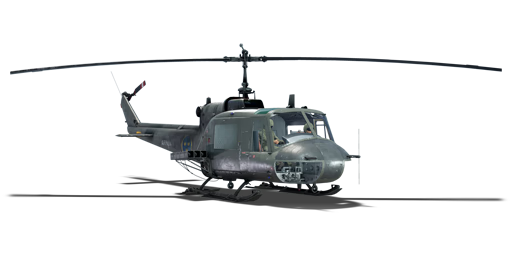


The HKP3C was originally based on the Italian license-manufactured variant of the Bell 204B (UH-1). Originally acquired in 1962 for helicopter rescue services, the platform saw extensive use in both the Swedish Air Force and Army. Serving for nearly 40 years, the HKP3 went through two modernization programs relating to its powerplant. Originally being delivered as the HKP3A, the type was quickly deemed underpowered prompting the decision to give it a more capable engine, redesignating it as the HKP3B. While this solved the problem of handling, the Army saw more potential in increasing the lift further by lengthening the tail and extending the rotor, thus creating the HKP3C we see represented in game. While the platform was not originally designed for anti-tank missions, the Army did extensive trials to incorporate the BANTAM missile to the HKP3. Although these tests were deemed successful, the military opted to not procure any missile armament for the type.
Introduced in Update "Wind of Change", the HKP3C is the introductory helicopter for Sweden. As it is one of the earliest examples of ATGM-carrying helicopters, it faces much less advanced threats while still being able to engage from a safe distance. While these missiles pack a significant punch compared to unguided rockets, the tradeoff comes at velocity as they take an extreme amount of time to reach the target, requiring patience and strategy to utilize correctly.












Flight performance |
|---|
Survivability |
|---|
Weaponry |
|---|